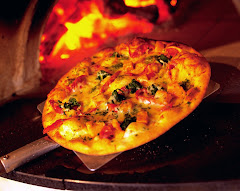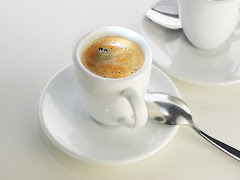 La Cantinella (Canti – Nella i.e., singing Nella) was the Osteria just across the way from the old café behind and below the Barolo castle. This fun little place allowed the option of eating inside with AC or outside in the heat but in the shade of the buildings above the restaurant as well as their huge umbrellas.
La Cantinella (Canti – Nella i.e., singing Nella) was the Osteria just across the way from the old café behind and below the Barolo castle. This fun little place allowed the option of eating inside with AC or outside in the heat but in the shade of the buildings above the restaurant as well as their huge umbrellas.Seated outside her eyes roamed from the bright yellow-orange of the Marchesi di Barolo cellars to the wine-covered hills above, the Barolo Castle and the barren parking lot in front. Melting in the heat but reveling in the scenery her mind floated from the suggestions of modern times to visions of the past. In some ways things have changed so much yet when immersed in these towns, one sees how little life really has changed, at least here drifting between the vineyards.
Lunch offered typical Piedmont dishes such as, raw hand cut and pounded Piemontese beef as an appetizer (do not shy away from this, raw meat is excellent for the body). A plate of mixed appetizers displayed Russian salad, raw meat, zucchini frittata with fondue alla Piemontese (the original fondue from Val D’Osta) and, bagna cauda, which was a big slice of blanched red pepper with green garlic sauce floating inside. Bagna cauda is famous in this region and the sauce is something you want to be sure to eat together if you are going home with your dinner partner because the garlic breath could kill a horse! (laughing, think I killed the Piglet)
The sauce is made from mashed garlic, lots of it, anchovies and olive oil (of course); the whole mix heated over a double boiler or at times served over a candle with raw veggies or served as it was that day on the pepper slices although not raw but just blanched. The fondue is another thing in and of itself!
This original fondue is prepared with Fontina, eggs, butter and milk and is a dense liquid (the cheese soaks in the milk for at least 8 hours if not longer). The milk is then tossed and the cheese is melted with fresh milk and a ton of butter and once it begins to thicken, an egg yolk or two is tossed in. Of course, this is best consumed with white truffles but hey, eating it by the spoonfuls is still a thrill and in the winter, this is a dish that outshines any cold day! So, while you all are putting kirsch in your fondues, just know that until you have tried the original here in northern Italy, you are missing out. ;-)
The rest of the meal consisted of agnolotti in butter and sage and risotto al Barolo, which is truly a local dish (just onions and wine)! They also served fresh homemade, hot bread infused with tons of oregano in a bread loaf form as well as a focaccia so her goal of limiting the bread intake that day went to the dogs! In that heat, no wine was ordered with lunch but then again, with all the little wine tasting who needed it (giggling)? To finish off the meal, a stop at the Antico Panettiere furnished a bag of local cookies or little fragile flat hazelnut “pancakes.” These contain
 the locally grown Piemontese hazelnuts and nice soft Amaretti cookies as well. ;-)
the locally grown Piemontese hazelnuts and nice soft Amaretti cookies as well. ;-)How can she emphasize enough the extent of excitement and depth of smiles this area can produce? To breathe-in this wine country one realizes this is not just about wine but about the substantial amount of history surrounding these great wines through the centuries. The vast amount of neat, well-cured vineyards will tantalize the dreams and emotions of any countryside lover; an unadulterated lullaby for all the senses. These hills undulate with history and passion at every turn and everywhere the eye might rest; one cannot help but get caught up in the spell. Speaking of spells, dinner at the Grinzane Cavour Castle is worth a separate post. To be continued…. ;-)














